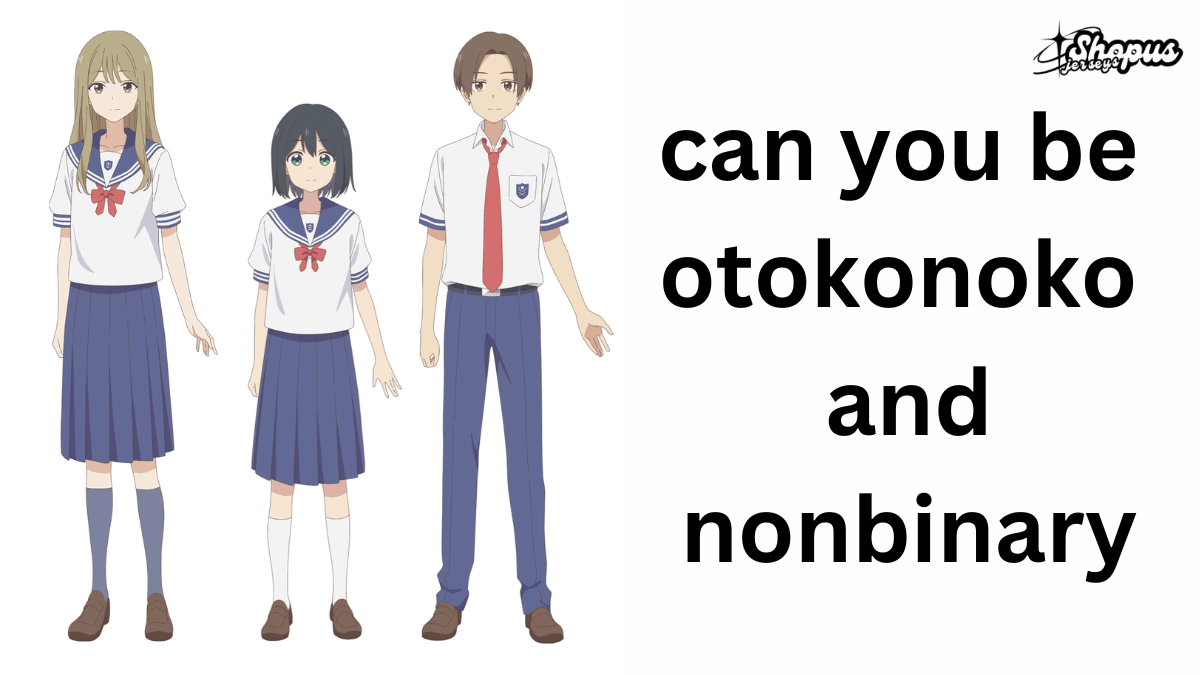Table of Contents
Gender identity and expression are topics that are gaining more attention around the world. In Japan, Otokonoko and nonbinary represent two unique ways people explore themselves. But can you be otokonoko and nonbinary at the same time? Let’s find out how these gender expressions blend into Japanese culture and what they mean for personal identity and pronouns.
What Does Otokonoko Mean?

Otokonoko is a Japanese word that describes men who enjoy dressing in women’s clothing. The word itself comes from two parts: otoko (meaning man) and ko (meaning child or person). Unlike some forms of cross-dressing, Otokonoko isn’t about transitioning to another gender; instead, it is a form of expression. Dressing in feminine attire allows these individuals to express themselves differently.
It’s important to note that Otokonoko isn’t the same as being transgender. Otokonoko refers specifically to men who dress as women, but it doesn’t mean they want to live their lives as a different gender permanently.
What Does Nonbinary Mean?
Nonbinary is a term used by people who don’t identify strictly as male or female. They might feel they are a mix of both genders or neither. Some nonbinary people may identify with multiple genders at different times, while others might not feel connected to any gender. For nonbinary individuals, gender is flexible and personal.
Nonbinary people might dress in ways that reflect both masculine and feminine traits, or they may choose a neutral style. Their identity isn’t about how they dress but how they feel inside. Visit: Shipman Bio
Can You Be Otokonoko and Nonbinary?

So, can you be Otokonoko and nonbinary at the same time? Yes, you can! These two concepts can blend in a way that allows people to express both their gender identity and their gender expression. Otokonoko focuses on outward presentation—how someone dresses and presents themselves to the world—while nonbinary is more about how a person feels inside about their gender.
Otokonoko allows nonbinary people to play with feminine presentation, even if their identity isn’t strictly male or female, demonstrating how fluidity can thrive within structured frameworks.
Personal Identity: Blending Otokonoko and Nonbinary
Blending the identities of Otokonoko and nonbinary can feel empowering for many individuals. It gives them the chance to explore different aspects of themselves. Otokonoko provides a visual way to break free from traditional gender roles, while nonbinary focuses on how someone identifies internally.
For someone nonbinary, dressing in a feminine way, such as Otokonoko, could be an exciting way to express one part of their identity. It shows that gender expression and identity don’t always have to match traditionally. For example, a nonbinary person might not feel like they fit into the categories of man or woman, but they may still love to dress in feminine clothing as a form of self-expression.
Pronouns: What to Use?

Regarding pronouns, Otokonoko and nonbinary individuals might prefer different terms. Someone who is Otokonoko may still prefer masculine pronouns like he/him, while another person might choose feminine pronouns like she/her to match their presentation. On the other hand, many nonbinary people prefer gender-neutral pronouns like they/them.
It’s always respectful to ask someone what pronouns they use. In Japan, as in many other countries, people are becoming more aware of the importance of using the correct pronouns, but this is still an evolving area. Many Otokonoko individuals and nonbinary people appreciate it when others make an effort to understand their identity and respect their choices.
The Cultural Shift in Japan
In Japan, Otokonoko is becoming more common in media and entertainment, but the nonbinary identity is still less understood. While Otokonoko is widely seen as a playful or artistic expression, nonbinary identities challenge deeper societal norms. However, younger generations are beginning to embrace these concepts more openly, creating room for acceptance and understanding.
Japan’s traditional views on gender are gradually shifting, with more people accepting the idea that gender isn’t fixed. Otokonoko and nonbinary identities are part of this cultural change, as they help broaden the view of what it means to be a man, woman, or something else entirely.
Challenges in Combining Otokonoko and Nonbinary Identities

Even though combining Otokonoko and nonbinary identities is possible, it can come with challenges. Some people may face confusion from others who don’t understand how someone can dress in a feminine way (as Otokonoko) while also identifying as nonbinary. Since nonbinary people often don’t fit into traditional categories, explaining their identity can be difficult.
In Japan, there is still much to learn about nonbinary identities. Many people may be more familiar with Otokonoko but may not fully understand nonbinary concepts. For those who embrace both, educating others and finding supportive communities can help overcome these challenges.
Moving Forward: The Future of Otokonoko and Nonbinary Identities

The future for people who identify as both Otokonoko and nonbinary looks promising, especially as younger generations in Japan and other countries push for greater acceptance of diverse gender expressions and identities. As more people learn about Otokonoko and nonbinary identities, there will likely be more understanding and appreciation for the unique ways people express who they are.
With social media, entertainment, and increasing awareness, the blending of Otokonoko and nonbinary identities will continue to grow. More individuals will feel free to express themselves without having to fit into a specific box, and society will become more accepting of the fact that gender is not as simple as male or female.
Also read: Can You Be Otokonoko and Nonbinary?
In conclusion, the answer is, can you be Otokonoko and nonbinary? is a clear yes. Otokonoko allows for gender expression through clothing, while nonbinary is about how someone feels inside. These identities offer a way to break free from traditional gender roles and explore who they are.






